Watching the film The Zone of Interest, one of the top contenders for Best Picture as well as Best International Film at the Oscars this year, was somewhat of a déjà vu moment for Ranjita Biswas. It brought back the painful memory of her visit some years ago to the Auschwitz concentration camp site off Krakow in Poland
The Zone of Interest is built on the background of the infamous holocaust (when many are killed in a war or fire) during the Second World War that saw millions of Jews exterminated by the Nazis. Sure, there are many films on the subject, both fiction and non-fiction, but director Jonathan Glazer’s film, loosely based on the book by Martin Amis, is different in treatment.
The film is not shown from the victims’ point of view but through the portrayal of the perpetrators that makes it even more heart-rending with its cynicism. You never see the horrific interiors of the camp; instead, the haunting music set by Mica Levi and the constant smoke in the air from the chimneys of the gas chambers make no mistake of what’s happening beyond the fence.
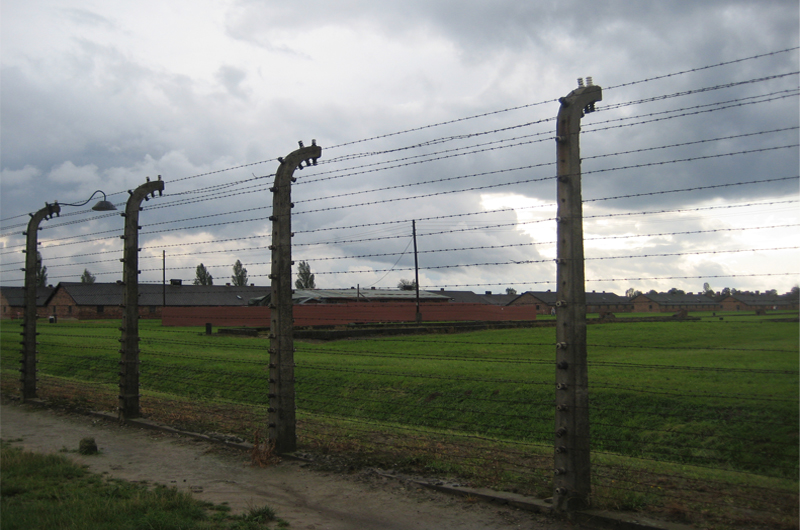
On this side is an idyllic set-up – gardens full of flowers and fruit trees surrounding the house of Rudolf Hoss, the commandant of the concentration camp (a real-life character). What makes one cringe is that the everyday luxurious life of Hoss and his five children, with a narcissistic wife Hedwig, goes on as if there’s nothing out of the ordinary happening beyond the ‘the zone of interest’, an area that separated living quarters and camp. It’s this contrast which ordinary people can go on living the way they do; when some monstrosity goes on side by side, that’s more galling, more dreadful, and forces us to think twice whether only monsters can commit things like that and not so-called ordinary people.
The film immediately brought to my mind a chiaroscuro of images: the pile of suitcases exhibited at the Auschwitz museum, snatched from thousands of Jews, Russian prisoners of war, gypsies and those considered by the Nazis as unfit to live before being marched off to the gas chambers, photographs of prisoners recorded with German precision, empty Zyklon-B canisters which contained chemicals used in gas chambers, piled up hair of women prisoners, shoes which once adorned feet of fashionable women and children, and the poles from which prisoners were hanged for trying to flee, or helping someone to flee.
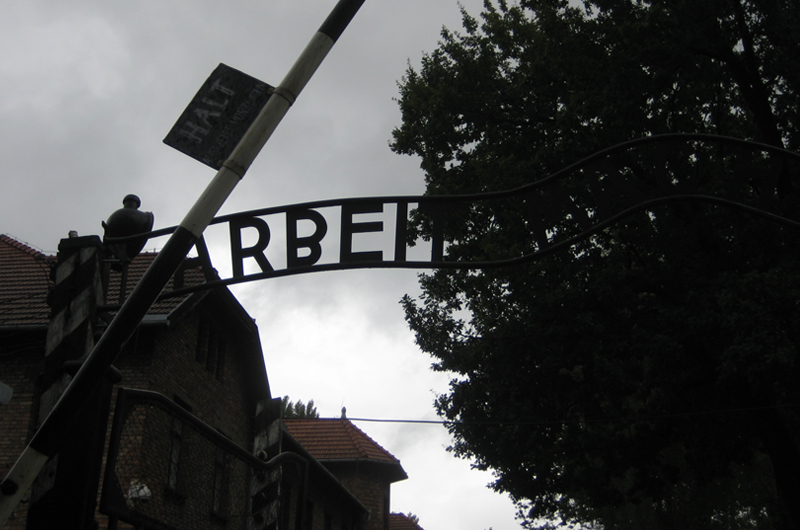
Poland had other concentration camps but Auschwitz was the biggest. People were brought from Nazi-occupied Europe in boxed-in railway compartments. Most were unaware of the fate that awaited them; they thought they were being taken to work in the fields and ‘resettled’. After all, the words at the entrance gate to the camp proclaimed: Arbeitmachtfrei (Work will make you free). Prisoners later called it Gate of Death.
Auschwitz was a new name given by the invading German army. Formerly, the place was called Oswiecim, a barrack for the Polish army. The SS (Schutzstaffel, the elite guard of the Nazi regime and a virtual state within the Third Reich) turned it into a Polish political prisoner camp in 1940 but, later, it was turned into a concentration camp. In 1941, three kilometres away, the Nazis evicted all the people from Village Brzezinka, destroyed their houses, and built the Auschwitz II-Birkenau camp. At the gate near the kitchen, a band was made to play, so that the prisoners could march and it was easier for the guards’ head-count.
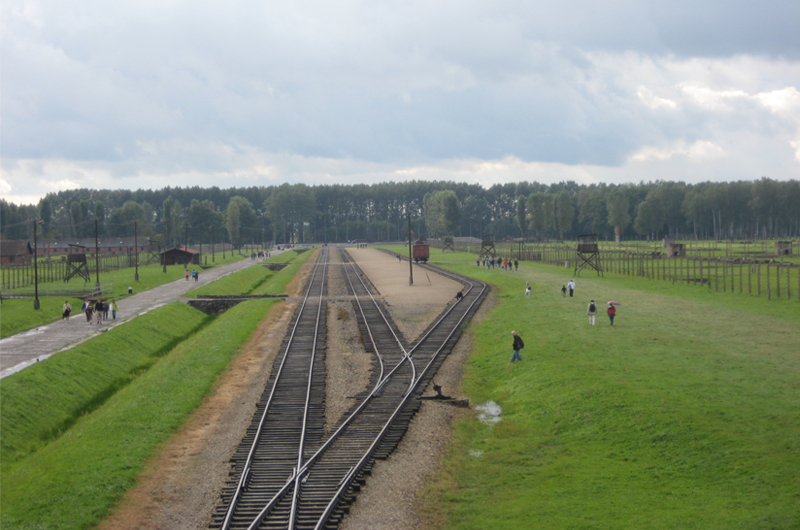
According to Reminiscences, autobiography of Rudolf Hoss, SS boss Himmler chose Auschwitz “both because of its convenient location as regards communication and because the area can be easily isolated and camouflaged by the surrounding forests.” Outside in the courtyard, I saw a wall pockmarked with bullet marks, a reminder of the prisoners executed. Flowers by visitors contrast brightly against the stark wall.
After Auschwitz I, the tour bus took us to Birkenau. The ominous fences, the stilted guard houses seen in many films startled me, as if taking me back half a century. I could feel the horror creeping into my skin though the grass was green in the field and the sun was now up flooding everything in a golden light.
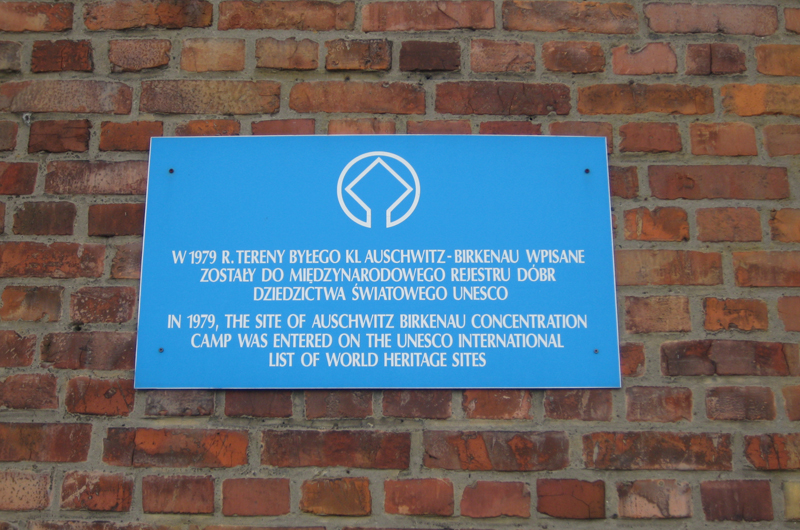
Auschwitz Birkenau/ German Nazi Concentration and Extermination Camp (1940-1945).
The railway tracks are still there. I saw that someone had put a bunch of yellow roses on a track. This is how the people were brought in. On arrival, they were ‘selected’. The old, pregnant women, even children, who were of ‘no use’, were sent directly to the gas chamber. The able bodied men were retained for work; as also young women some of whom could later be used as guinea pigs for experiments by doctors and psychiatrists. Ironically, photographs taken by some unknown German soldiers, the reels of which survived the burning of documents before the Nazis flew, stand testimony to this selection process.
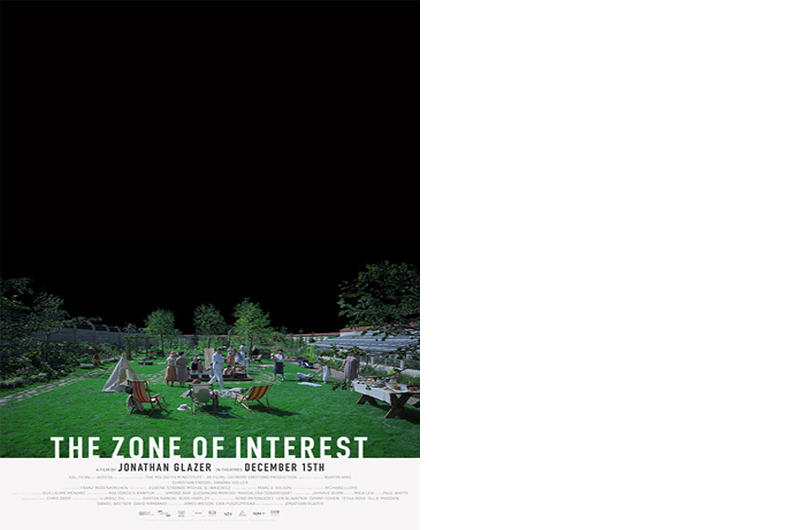
The living quarters, some of which are still there show how bunkers were built in horse stables; each bunker sometimes accommodated more than 10 inmates. Holes in rows on stone slabs with no privacy served as toilets, obviously an ideal place for festering diseases and death.
George Santayana’s words at Auschwitz kept echoing in my mind as I boarded the bus for Krakow: “The one who does not remember history is bound to live through it again.”
Something to ponder over indeed in the times we are living in now.
(The writer is a senior journalist and translator who lives in Kolkata.)


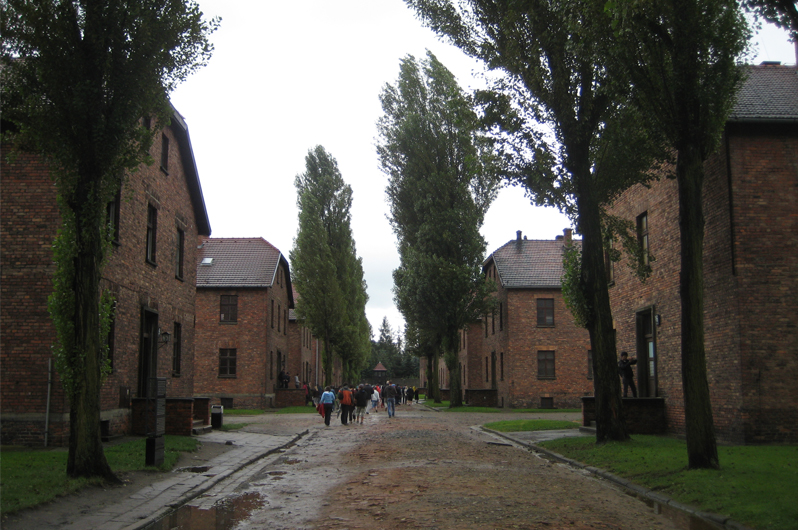
 from Webdoux
from Webdoux